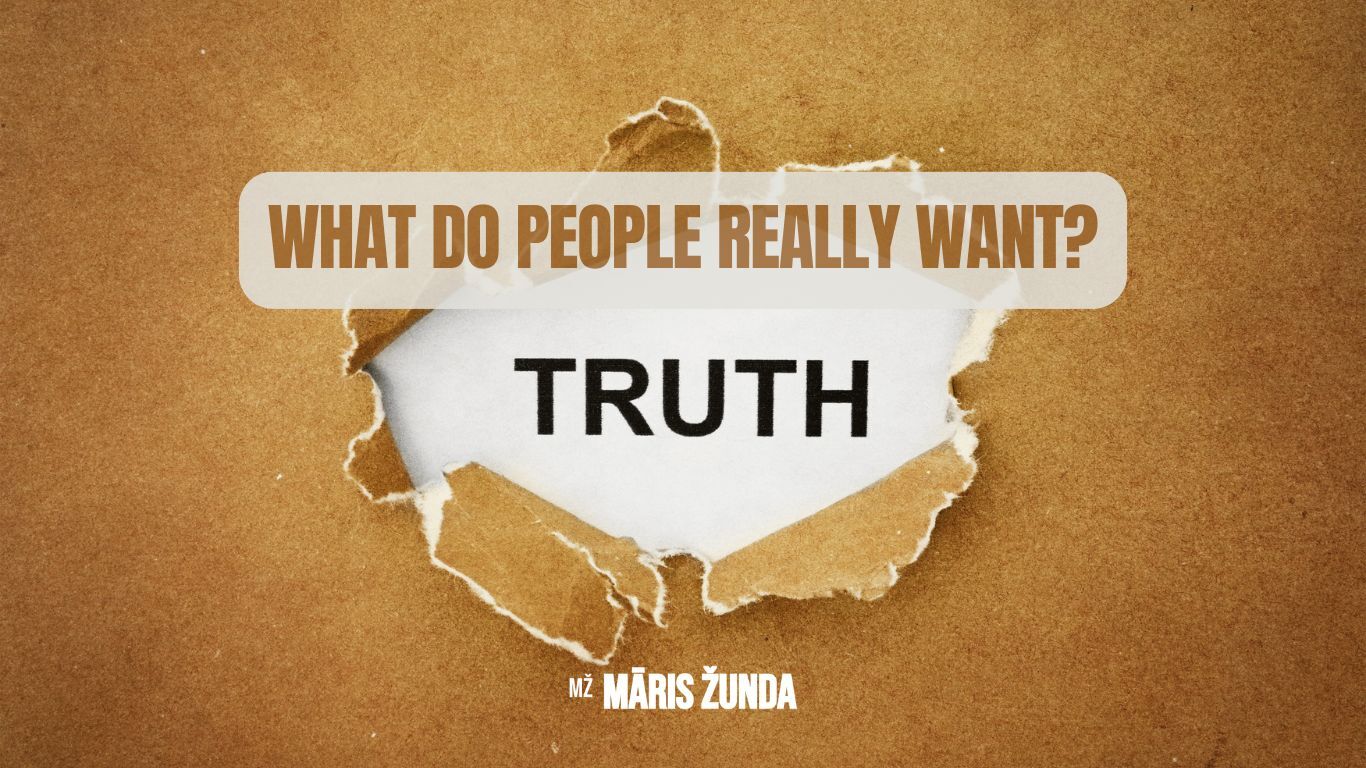Insights from 150 Emotional Diagnostics
By Māris Žunda
Over the past year, I’ve led more than 150 emotional diagnostics – a process that has challenged, transformed, and deeply moved me. Each session is like a window into a person’s inner world. And after so many deep encounters, I can clearly answer one deceptively simple but profound question:
What do people really want?
While everyone comes with their own story, pain, masks, and search, I see the same patterns repeating.
1. People want to feel happiness
Not a filtered, social media happiness or a fleeting rush of excitement, but deep, internal, grounded happiness. Not euphoria. Not a reward for success. A state of simply being – without the need to run, prove, or pretend. Just being with oneself. A silent knowing: everything is okay.
But for many, this feeling is a foreign language. They chase happiness through status, relationships, accomplishments – yet can't feel it in their body. During diagnostics, I often sense tension, anxiety, and fear. For some, happiness even feels suspicious: “If I feel good, something bad will follow.” This belief blocks relaxation. It blocks life.
2. People want inner peace
Not silence on the outside – silence on the inside. A state where thoughts aren’t shouting. Where the body isn’t screaming through symptoms. Where you're not at war with yourself.
This peace isn’t a luxury – it's a natural state when a person is not traumatized. But many of those I work with live in a constant state of inner tension. Childhood wounds. Unprocessed emotions. Stress that becomes so normalized, it fades into the background – like static you no longer notice, but which drains your energy.
And when we open that “inner landscape” during diagnostics, the first reaction is often tears. Because finally, someone sees. Without judgment. And allows everything to just be.
3. People want to feel love
Not just be loved – but to feel capable of love. To be open to love. Many people have this channel blocked. And I see it clearly: people haven’t lost the desire for love, but they’ve lost the belief that it’s available. Or that they are worthy of it.
Some appear warm, kind, loving on the outside. But energetically, there’s a closed tunnel around the heart. There’s fear. Pain. Betrayal. Lost relationships. They no longer trust love.
It shows up physically too – tight chest, shallow breathing, tension in the diaphragm. When we start to unlock these areas, something beautiful happens. People come back to themselves. To love for themselves. And only then can they give love to others – not from lack, but from wholeness.
4. People want to feel themselves again
They feel fragmented. One person told me, “At work, I’m one version of me. At home – I’m someone else.” Another said, “I don’t know who I am outside my responsibilities.” Others: “I don’t feel authentic anywhere.”
It’s like they’re split between body, mind, and spirit. Between duties and desires. Between what “should be” and what actually is.
People want to be whole again. They’re tired of role-playing. They crave authenticity – to be who they truly are in all areas of life. And this isn’t a quick fix. It’s a return to self. During diagnostics, I can sense where the split happened – the moment someone abandoned part of themselves. Often in childhood. In a relationship. Through shame or rejection.
My mission is to help them reclaim it.
What happens in an emotional diagnostic?
It’s not just a conversation. It’s an entry into someone’s emotional, energetic, and informational field. Using a specific technique, I can sense where energy is blocked, where it’s stuck, where it’s forgotten. The body speaks. The subconscious speaks. Everything unprocessed is stored there.
People come with different topics, but underneath, the roots are the same:
fear, not-enoughness, inner fragmentation.
The diagnostic is not a diagnosis – it’s a map. And once people see their map, they begin to remember the way back home – to themselves.
My key insight
People don’t want another technique. Another course. Another book.
They want to feel. Themselves. Life. Presence.
We live in a time of information overload. But a lack of true sensation. People crave aliveness. Real connection. Belonging. They yearn for something that can’t be described in words – but is instantly recognized when experienced.
To feel that, we must drop from the head into the body.
From “I should” into “I am”.
From control into trust.
That’s what people are truly seeking – and what they find when they allow the subconscious to speak.
A personal invitation
If you feel fragmented.
If something’s missing but you can’t name what.
If everything looks fine on the outside, but inside there’s a silence you’re afraid to hear…
then this path might be for you.
An emotional diagnostic isn’t the answer.
It’s the beginning of a real return to self.
And that’s what people truly want – to be real, free, and whole within themselves.

